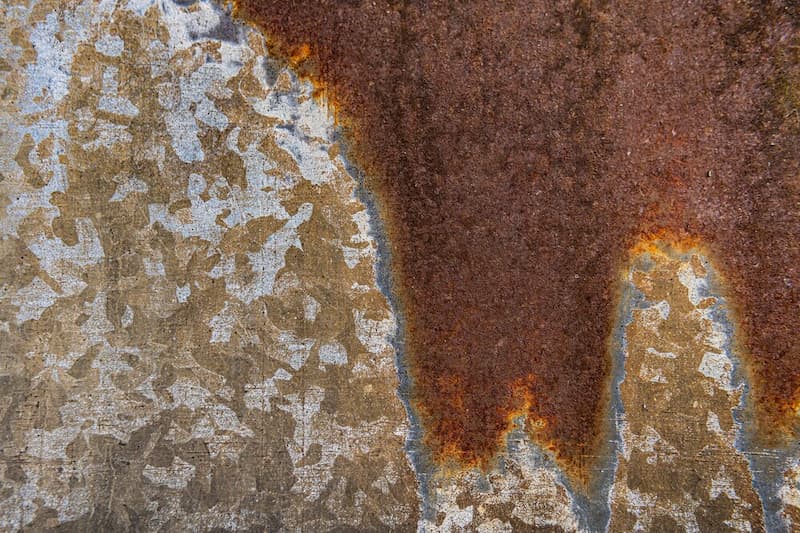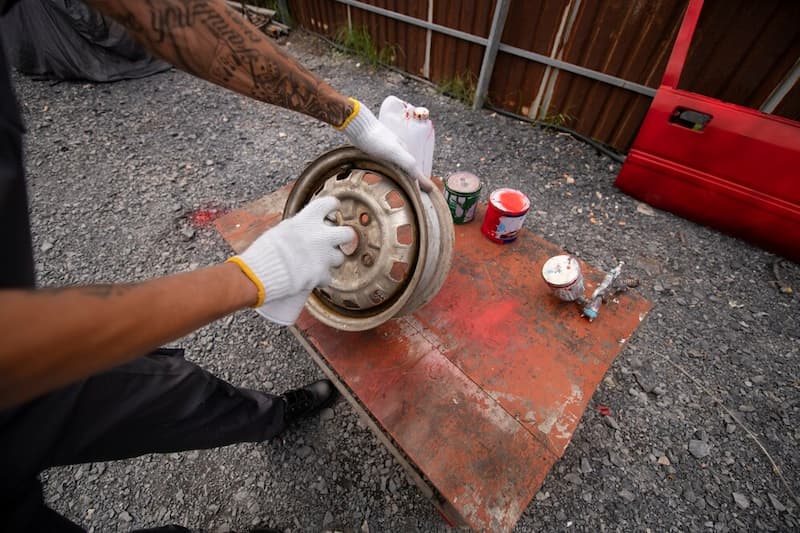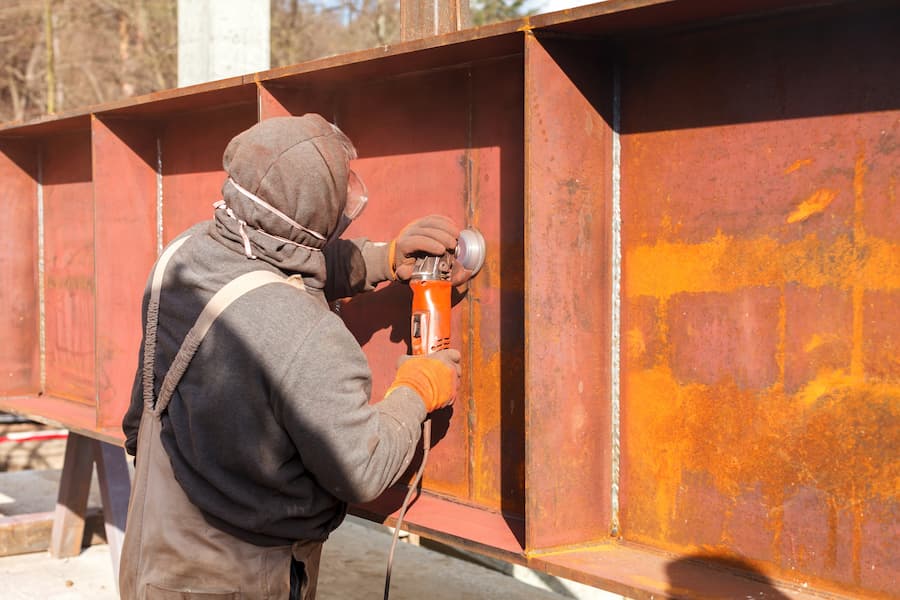No products in the cart.
Effective Rust Converter and Primer Solutions: Use Rust Converter to Convert and Protect Rust with Rust Primer from Rust Store, Applying the Right Techniques
October 8, 2024
By Xion Lab
Free Shipping
easy returns
secure paymentS
FAQ | MY ACCOUNT | SUPPORT
October 8, 2024
By Xion Lab
Rust is a persistent issue for metal surfaces, gradually deteriorating their strength and integrity if left unchecked. Utilizing a rust remover followed by a rust converter primer is a highly effective method to stop this process. A rust converter works by turning rust into a black, stable coating that halts further oxidation, providing a solid foundation for any paint job. By treating rust with the right products from a trusted rust store, you can ensure your metal surfaces remain strong, durable, and fully protected from future damage.
Rust forms when iron or steel reacts with oxygen and moisture in the air, leading to oxidation. This chemical reaction produces iron oxide, which we commonly refer to as rust. Over time, existing rust can spread and weaken the structural integrity of metal surfaces, making them more susceptible to breakage and corrosion. Left untreated, rust continues to deteriorate the material, which is why addressing the issue early is critical.

The rust formation process can significantly compromise metal surfaces, leading to costly repairs or replacements. The more advanced the rust, the more difficult it is to reverse the damage, which is why prompt action using effective methods is crucial for long-term protection.
Converting rust is essential to halt further deterioration of the metal. If rust is not treated, the oxidation process will continue, causing progressive damage to the material. Rust converter products are designed to stop this cycle by chemically converting the rust into an inert substance, preventing further corrosion. This transformation is key to protecting the metal and restoring its structural integrity.
A rust converter works by turning rust into a black, stable surface, ready for further treatment. This conversion forms a protective layer that stops oxidation and prepares the metal for additional coatings. After the rust has been converted, applying a rust primer is essential to seal the surface and protect it from future corrosion.
When applying a rust converter, it’s important to remove as much rust as possible before applying the product. Using a rust remover or a brush to eliminate loose flakes ensures that the converter can bond effectively with the remaining rust. Whether you are using a water-based rust converter or a rust converter with a brush, the product should be evenly applied and left to dry completely. A rust converter will dry within a specific timeframe, typically 24 hours, during which it chemically reacts with the rust, transforming it into a protective black layer.
This black coating serves as a durable foundation for future treatments, such as painting or additional primers. By properly converting the rust and sealing it with a primer, you ensure the metal remains protected and strong for years to come.
When you apply a rust converter, it reacts with the rust to convert it into a black, inert material. This conversion not only halts the corrosion process but also creates a stable base for a primer or top coat. The rust converter chemically bonds to the rust, turning it into a protective layer that prevents further oxidation.
Once the rust is converted, a rust primer should be applied to seal the surface. The primer acts as a barrier between the metal and external elements such as moisture and air, which can cause new rust to form. Applying the right primer after using a rust converter is critical to ensuring long-term protection.
The primary function of a rust converter is to transform surface rust on rusty iron or steel into a protective black layer. This process is made possible by ingredients like tannic acid, which converts iron oxide into a stable form that halts further corrosion. Once the rust into a protective coating is achieved, the next step is to get the surface ready for further treatment. It’s crucial to get any loose or flaking rust removed before application to ensure the converter can work effectively.

After applying the rust converter, it’s recommended to follow up with a primer to lock in the converted rust and prepare the surface for painting. For metal parts, using a rust converter can be extremely beneficial in preserving their longevity. A high-quality primer, such as oil-based or epoxy, should be applied to ensure a high quality end result. This additional layer of protection will prevent rust from returning and ensure the surface is ready for a powerful rust-resistant paint job. Properly applying the rust converter and primer together leads to a high-quality finish that ensures long-lasting protection for your metal surfaces.
Before applying rust converter, it’s important to thoroughly clean the surface. Remove any loose rust or flakes with a wire brush to ensure the rust converter can properly bond with the surface. Cleaning the area also involves degreasing the surface to remove oils or contaminants that could interfere with the rust conversion process.
Taking the time to properly prepare the surface ensures that the rust converter will work effectively. The cleaner the surface, the better the converter will perform, leading to a more stable and long-lasting protective layer.
Once the surface is cleaned, you can begin applying rust converter. Use a brush, roller, or sprayer depending on the size of the area you are treating. For larger surfaces, a rust converter spray may be the most efficient option, while a brush is better for smaller or more detailed areas.
It’s essential to allow the rust converter to fully dry and chemically convert the rust. During this process, the converter will react with the rust, turning it into a black coating that signals the rust has been neutralized. This coating forms a protective layer that prevents further rust from forming.
After the rust has been converted, it’s time to apply a primer to seal the surface. The primer should be applied in two coats for optimal coverage. The first coat creates a barrier between the newly converted surface and the elements, while the second coat adds additional protection and prepares the surface for painting or other finishing treatments.
A good metal primer ensures that the rust doesn’t return, keeping the surface safe from moisture and oxidation. The primer is crucial for locking in the protective benefits of the rust converter and extending the life of the metal.
For large areas or surfaces with intricate details, a rust converter spray can be the best option. The spray allows for quick and even coverage over the entire surface, ensuring that all areas are treated effectively. A spray application is particularly useful when working with larger surfaces like sheet metal, where using a brush would be time-consuming.
The convenience of a spray also ensures that the rust converter reaches difficult or hard-to-access areas, making it an excellent choice for larger jobs where efficiency is important.
For smaller or more detailed work, using a brush to apply the rust converter offers more control. This method ensures thorough coverage in areas where precision is needed, such as around edges or in tight spaces. Using a bristled brush also allows you to work the converter into any pitted areas or cracks in the metal, ensuring a complete application.
Brush application is often preferred for smaller objects or when working with rusty metal that requires extra attention to detail. It also allows for better penetration of the rust converter into the rust, ensuring a more thorough conversion process.

One of the most common mistakes when applying rust converter is failing to properly prepare the surface. If you do not remove loose rust or contaminants, the converter will not be able to adhere correctly, leading to poor results. Always clean and degrease the surface before applying the converter to ensure that it can fully convert rust into a stable surface.
Another mistake is applying too much or too little of the rust converter. Using too much can lead to an uneven application, while using too little may not fully convert the rust. The key is to apply a thin, even coat and allow the converter to dry completely before adding additional layers or primer. Proper application ensures that the rust is completely neutralized and that the surface is adequately protected.
Rust converters are specifically designed for use on iron or steel objects, such as rusted metal, sheet metal, and galvanized metal. They are most effective on surfaces where rust has already begun to form. Before applying, it’s essential to remove as much loose or flaking rust as possible. The object of this step is to ensure the converter can fully bond to the surface. While removing rust, be sure to clean the area thoroughly, as rust converters work best on clean metal surfaces.
A rust converter typically takes about 24 hours to dry and fully convert rust into an inert material. Depending on the product, the rust converter contains tannic acid, which chemically reacts with the rust, turning it into a black coating that signifies the rust has been neutralized. Once applied, it’s crucial to let it dry completely before applying any additional coatings, such as a protective primer layer or oil-based paint.
Yes, it’s highly recommended to use a rust primer after applying the converter. The primer keeps the surface protected and helps cover rust, preventing further damage. After the rust has been converted into a stable, inert layer, a primer should be applied to create a coating that prevents further rusting. The primer ensures a smooth finish and leads to a high-quality end result, particularly when combined with oil-based or epoxy paints.
Rust converters are designed for use on rusted surfaces, not bare metal. If you are working with bare metal or light rust, it is recommended to apply a metal primer instead. The converter works by reacting with rust, and without it, the product has no rust to chemically bond with. For bare metal, use a rust inhibitor or primer to provide rust protection and prevent oxidation.
It is generally recommended that two coats of rust converter be applied for maximum effectiveness. The first coat chemically reacts with the rust to create a black coating, and after allowing it to fully dry, a second coat should be applied for extra durability. Once the rust converter has dried, apply a sealer or primer for additional protection. Whether using a brush or a roller, make sure each layer is even and complete. Afterward, finish the job with a high-quality paint like Rustoleum to achieve long-term rust prevention.
It’s recommended to apply two coats of rust converter for maximum effectiveness. Allow the first coat to dry completely before applying the second. After both coats are dry, apply a primer to seal the surface.
Properly applying rust converter and primer is essential for protecting metal surfaces from future rust. By following the steps outlined above, you can effectively convert rust into a stable, protected surface, ensuring long-lasting protection for your metal objects and surfaces.